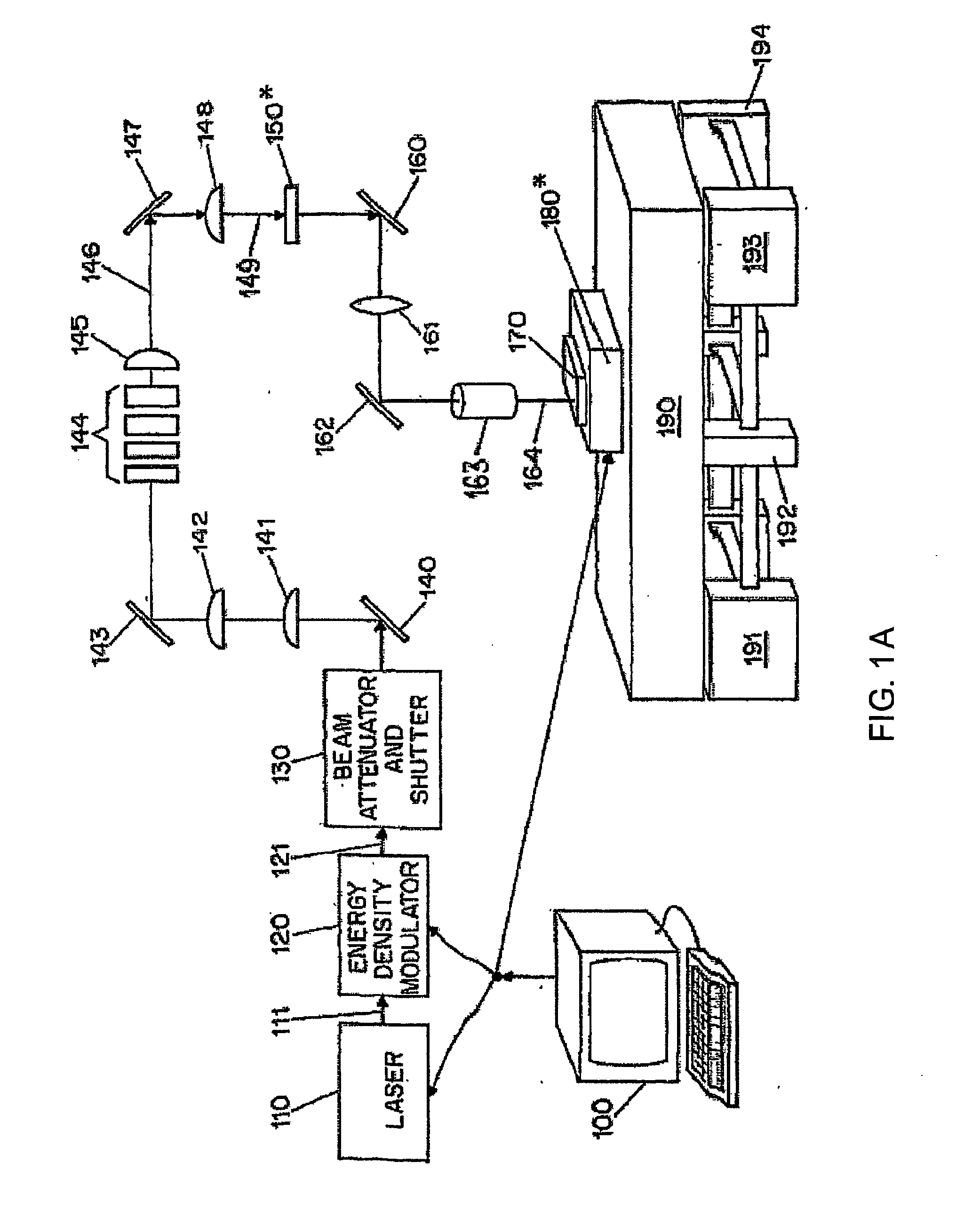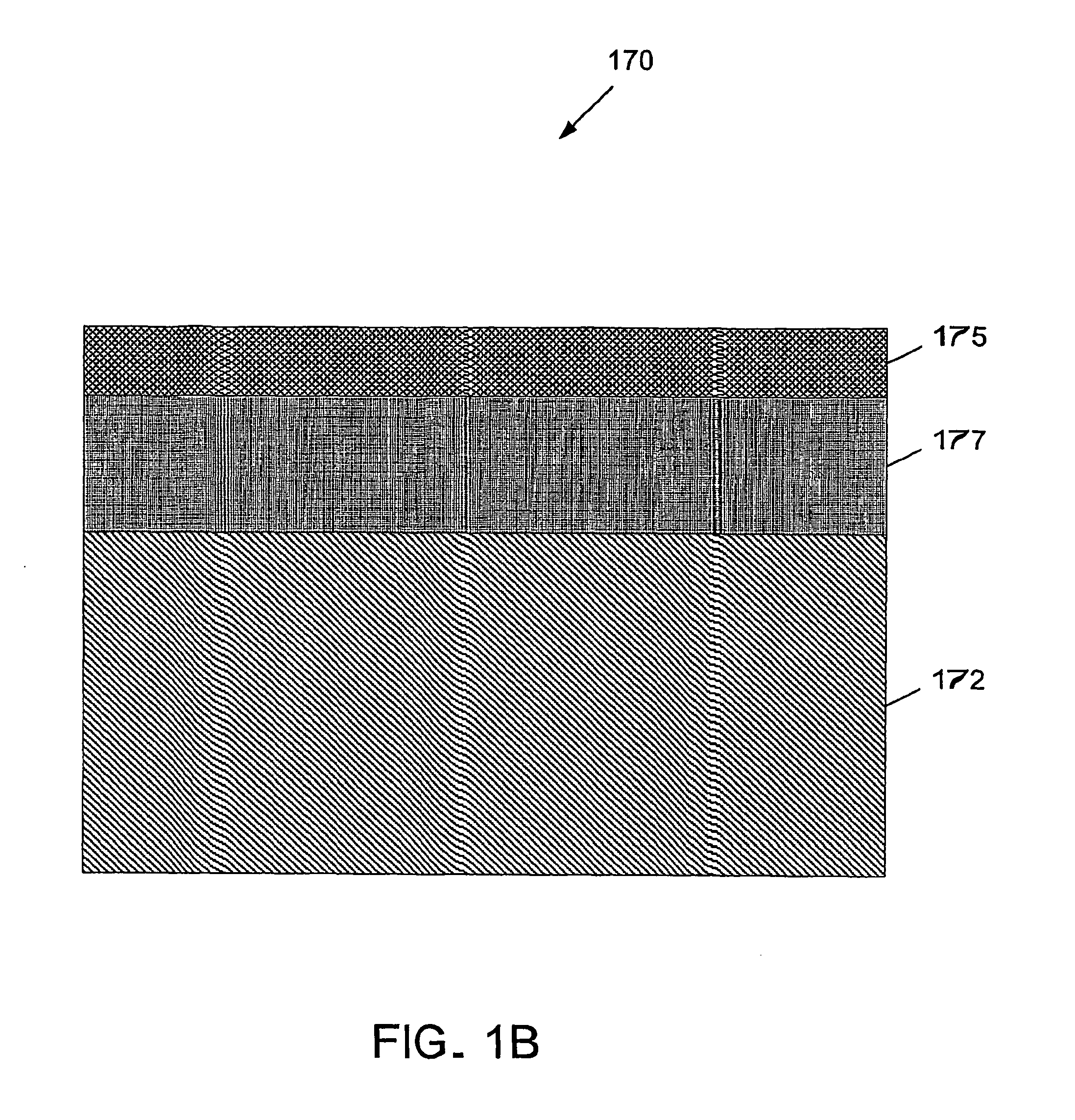Process and system for laser crystallization processing of film regions on a substrate to minimize edge areas, and a structure of such film regions
a laser crystallization and processing system technology, applied in lasers, transistors, manufacturing tools, etc., can solve the problems of non-uniform edge region, fabricated thin-film transistor (“tft”) devices, and often suffer from microstructural non-uniformities, so as to increase the speed of processing the semiconductor film
- Summary
- Abstract
- Description
- Claims
- Application Information
AI Technical Summary
Benefits of technology
Problems solved by technology
Method used
Image
Examples
second embodiment
[0058]FIGS. 6A-6D show an exemplary progression of the process according to the present invention in which a plurality of successive areas along the first conceptual column 205 of the semiconductor thin film 175 is irradiated by the masked beam pulse 164 (comprised of beamlets) which is shaped by the mask 150′ of FIG. 5A. The translation of the sample 170 with respect to the impingement thereof by the beam pulse 164 is substantially the same as the translation described above with reference to FIGS. 4A-4F. The difference between the irradiation of the areas 310, 320, . . . , 380, 390, 410, 420 by the beam pulse 164 shaped by the mask 150 of FIG. 3 and the areas 460, 470 by the beam pulse 164 shaped by the mask 150′ is that substantially the entire areas 310, 320, . . . , 380, 390, 410, 420 are irradiated and crystallized, as opposed to only certain small portions 462 of the areas 460, 470 are irradiated and crystallized.
[0059] Similarly to the area 310 in FIG. 4A, the portions 462 o...
third embodiment
[0060] In addition, it is possible to utilize a mask 150″according to the present invention as shown in FIG. 7 which has a long and narrow open or transparent region 490 so as to pattern and shape the beam 149 into the beam pulse 164. For example, the length of the region 490 can be 0.5 cm and the width thereof may be 0.1 mm. In this manner, each conceptual column of the sample 170 illustrated in FIG. 2 can be irradiated by the beam pulse 164 shaped by this mask 150″. In addition, it may be possible for the length of the region 490 to be 30 cm. Thus, instead of subdividing the semiconductor thin film 175 into a number of conceptual columns, and irradiating each column separately, it is possible to irradiate and crystallize selected portions of the semiconductor thin film 175 by translating the sample 170 in the −Y direction from one edge of the sample 170 to the opposite edge thereof. It is important that the center regions be formed using such processing technique such that it woul...
PUM
| Property | Measurement | Unit |
|---|---|---|
| length | aaaaa | aaaaa |
| length | aaaaa | aaaaa |
| areas | aaaaa | aaaaa |
Abstract
Description
Claims
Application Information
 Login to View More
Login to View More - R&D
- Intellectual Property
- Life Sciences
- Materials
- Tech Scout
- Unparalleled Data Quality
- Higher Quality Content
- 60% Fewer Hallucinations
Browse by: Latest US Patents, China's latest patents, Technical Efficacy Thesaurus, Application Domain, Technology Topic, Popular Technical Reports.
© 2025 PatSnap. All rights reserved.Legal|Privacy policy|Modern Slavery Act Transparency Statement|Sitemap|About US| Contact US: help@patsnap.com



